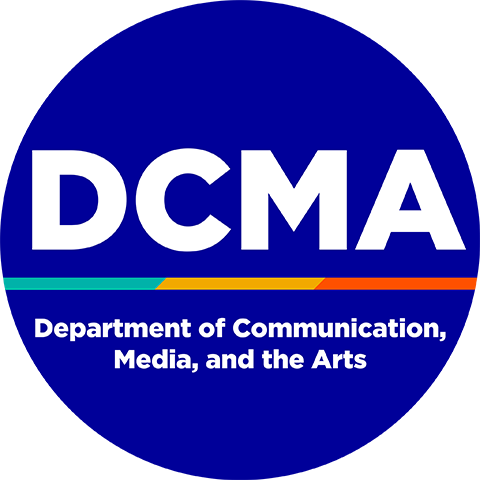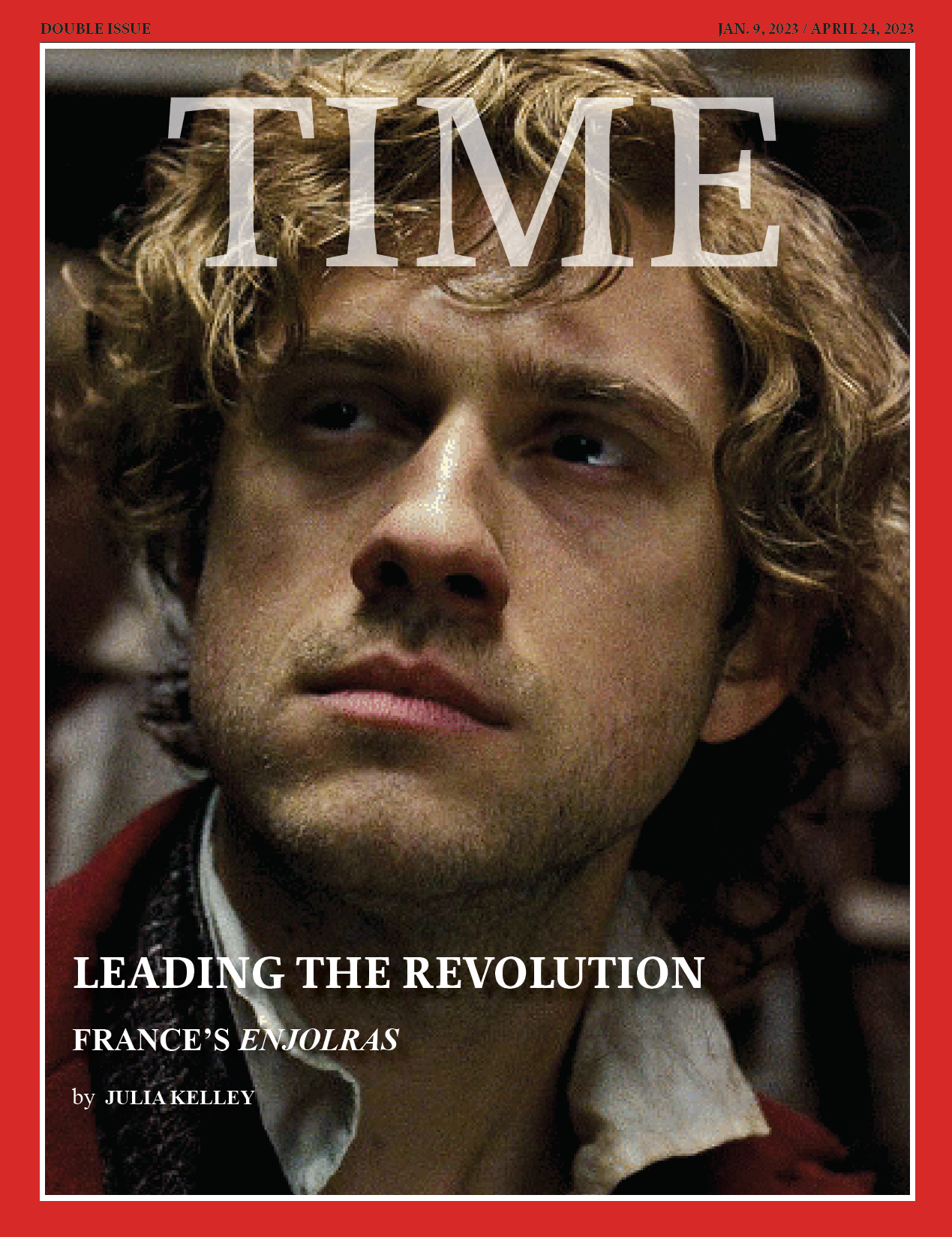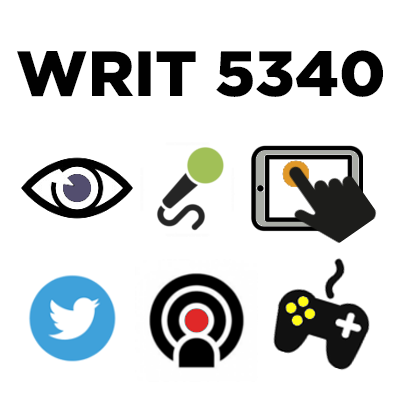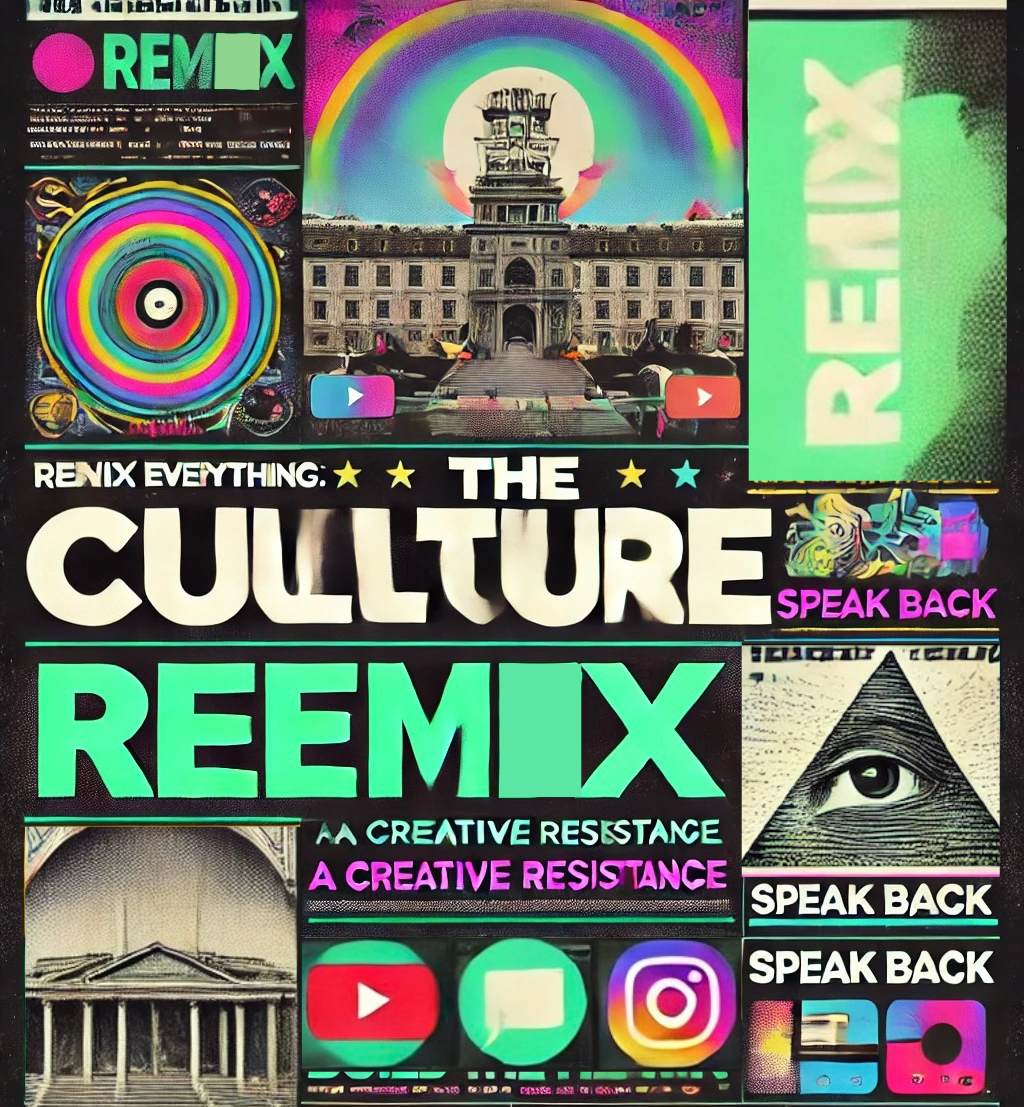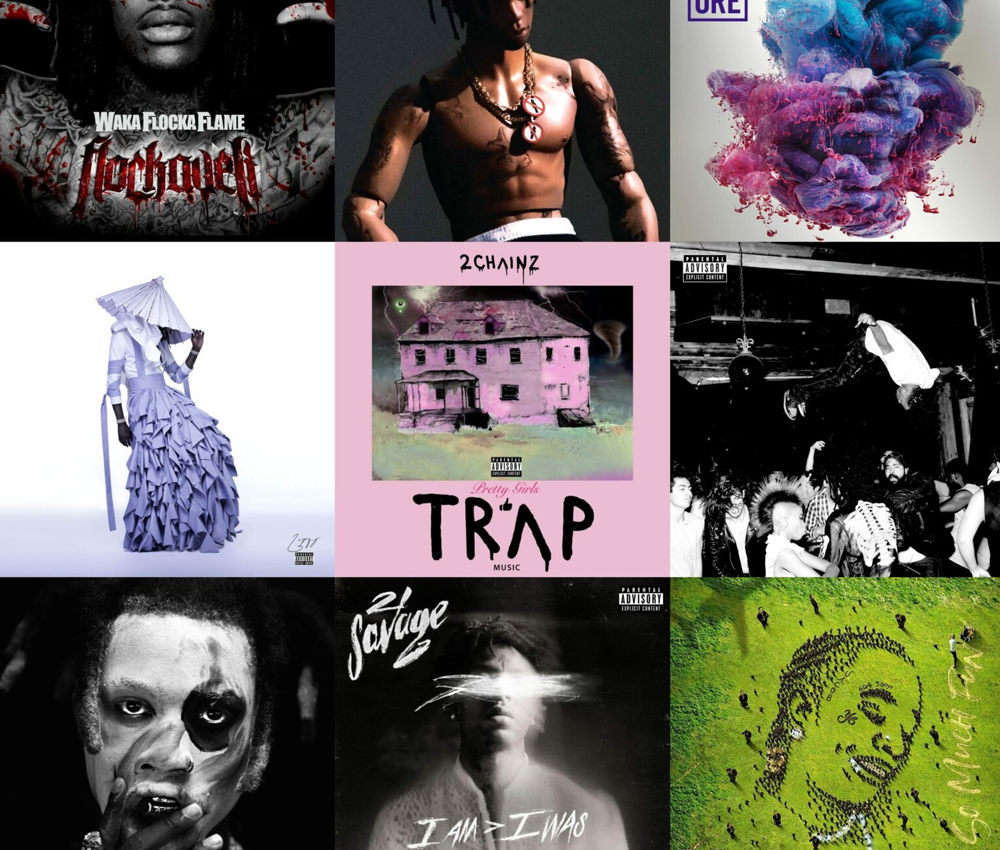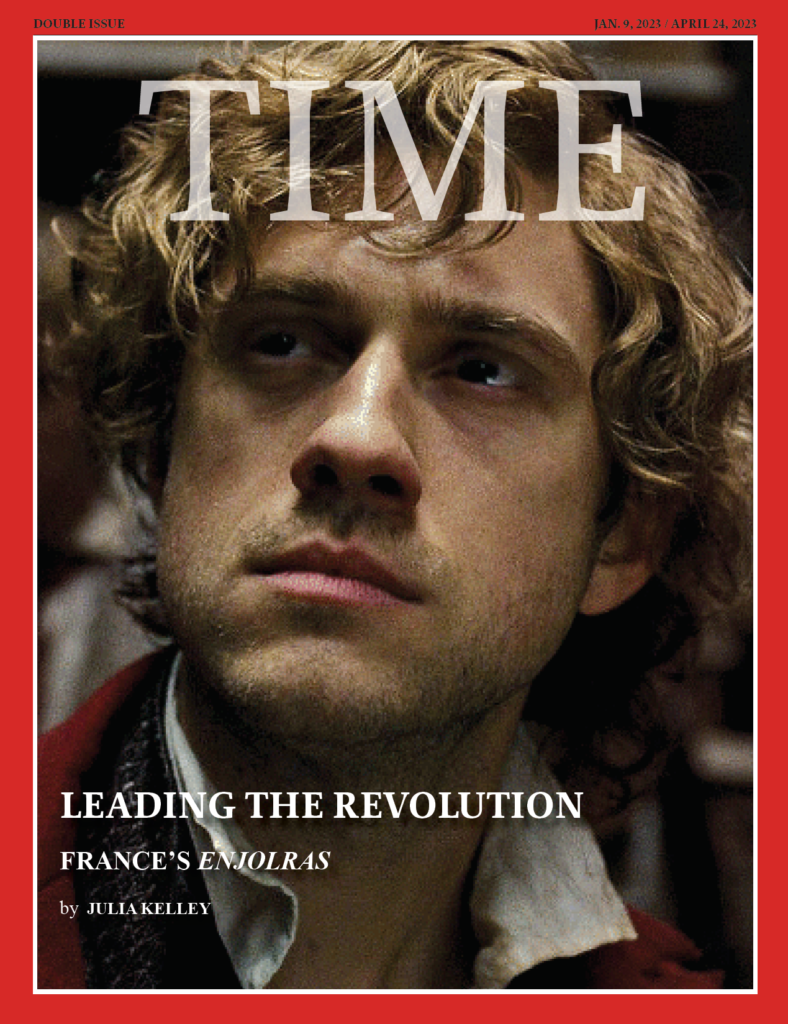
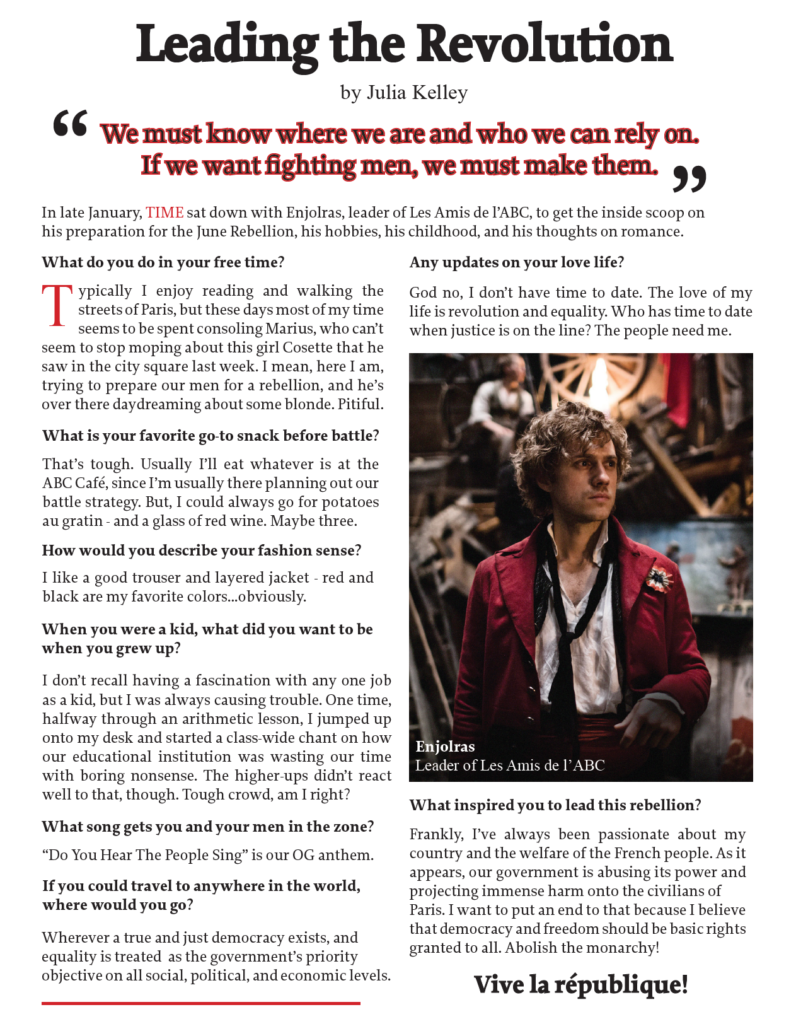
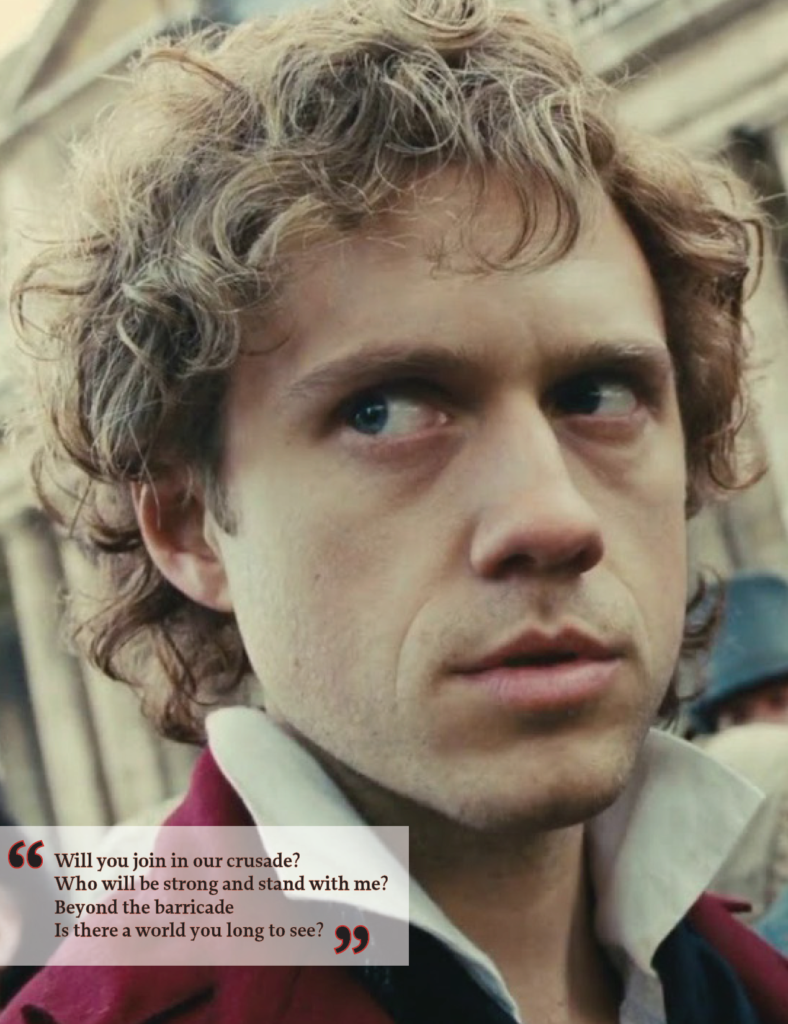
- Maker: Julia Kelley
- Genre: Parody Magazine
- Level: Graduate
- Program: Composition, Rhetoric, and Digital Media
- Course: WRIT 5340: Studies in Multimodality and Digital Media
- Instructor: Dr. Eric Mason
- Semester Created: Winter 2023
Description
For the purposes of the parody project, I chose to create a TIME magazine article on the Les Misérables character Enjolras, who is the leader of Les Amis de l’ABC, a group of students seeking to abolish the French monarchy by participating in the June Rebellion of 1832 in Paris, France. Les Misérables is my favorite musical, which inspired my idea for this project. I thought it would be interesting to merge history with parody through the lens of a fictional story and utilize a popular magazine (TIME) as the vehicle to express it through. In the initial stages of creating this project, I used Canva to develop a rough draft (a way to see how I could articulate my vision into an accurate visual representation), but after the initial brainstorm, I used InDesign to develop and produce the magazine article. I chose InDesign as my medium because I wanted to get more practice and experience using it, as I know that the industry I am looking to potentially enter upon graduation requires this knowledge. In order to go about this project accurately and authentically, I had to research the layout and structural conventions of TIME’s interview pieces, and I also had to think about what the opposite of these conventions would look like, such as how gossip magazines are formatted.
Reflection
In reflecting on the process of producing the parody project, I found it difficult to answer the questions on behalf of Enjolras himself, and I had to try to put myself in his shoes while also being cognizant of the time period that he fictionally exists within to craft responses that would be accurate to the time and to what I know about his character’s personality. Craig Stroupe’s “Hacking the cool: The shape of writing culture in the space of new media” explicates the role of narrative storytelling in writing culture over the course of historic periods (Stroupe, 2007) and this helped me think about my approach to this project and how I wanted it to be grounded in the historical period that Les Misérables takes place in, as well as aided me in conceptualizing how I wanted to embody Enjolras in the responses I curated for my parody magazine article. The process of developing this project was different from standard writing assignments that I do because I imagined the project idea from a purely visual standpoint. Rather than creating a text-heavy outline organizing my ideas, I approached this project by visualizing what I wanted it to communicate and represent, and I created a visual outline to showcase this and to solidify my artistic vision. In other words, my design thinking process substantially informed the direction, creation, and execution of this project. Jonathan Alexander and Jacqueline Rhodes’ explanation of avant-garde media in On multimodality: New media in composition studies also assisted my thinking in how I could further push the boundaries of the genre while also articulating a clear purpose (Alexander & Rhodes, 2014). Additionally, I purposefully broke some of TIME’s interview article conventions by looking at the structures of gossip columns to see how these articles were laid out and designed. Ultimately, I chose to keep the visual conventions and overall structure of TIME the same, but I created questions that aligned more closely to that of what would be asked in a gossip magazine (lighthearted, personality related questions) which I think allowed my project to successfully operate as a parody.
Sources:
Alexander, J., & Rhodes, J. (2014). On multimodality: New media in composition studies. Conference on College Composition and Communication of the National Council of Teachers of English.
Stroupe, C. (2007). Hacking the cool: The shape of writing culture in the space of new media. Computers and Composition, 24, 421-442. https://doi.org/10.1016/j.compcom.2007.08.004
